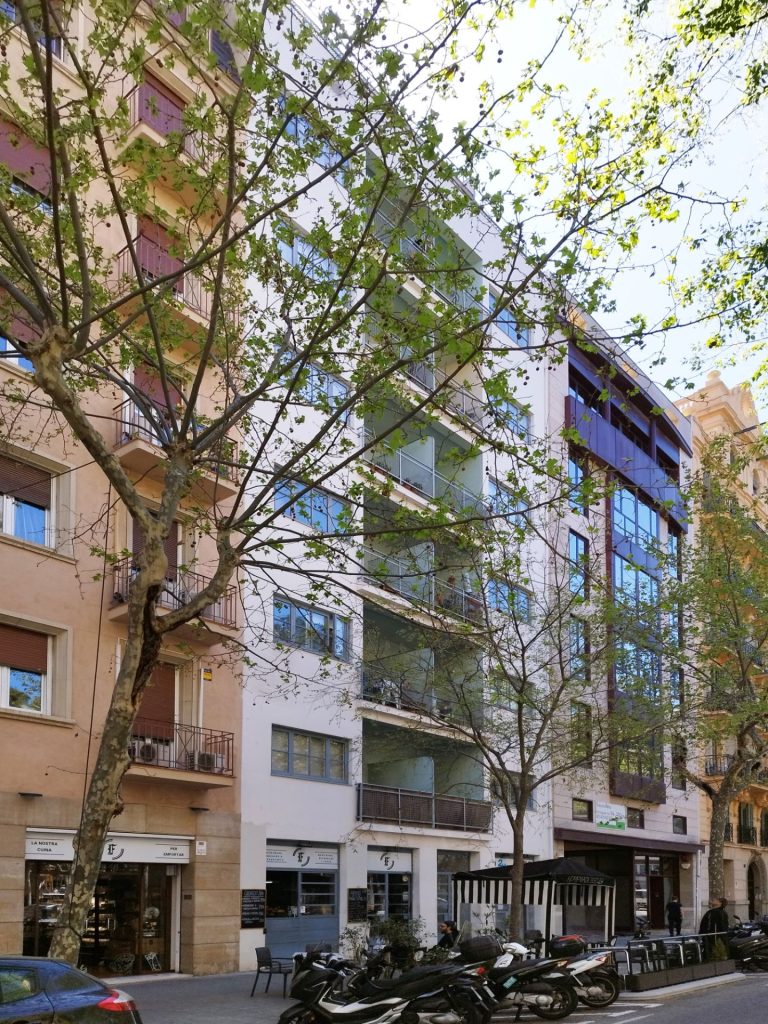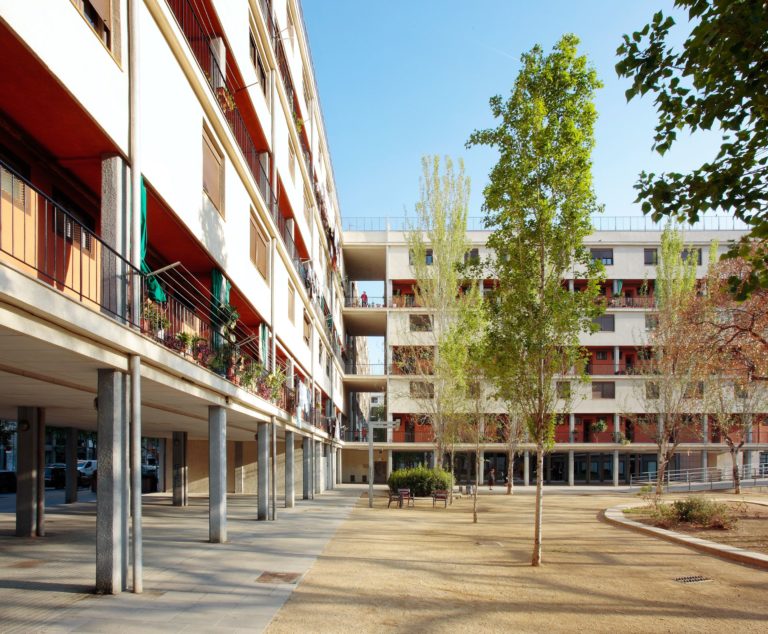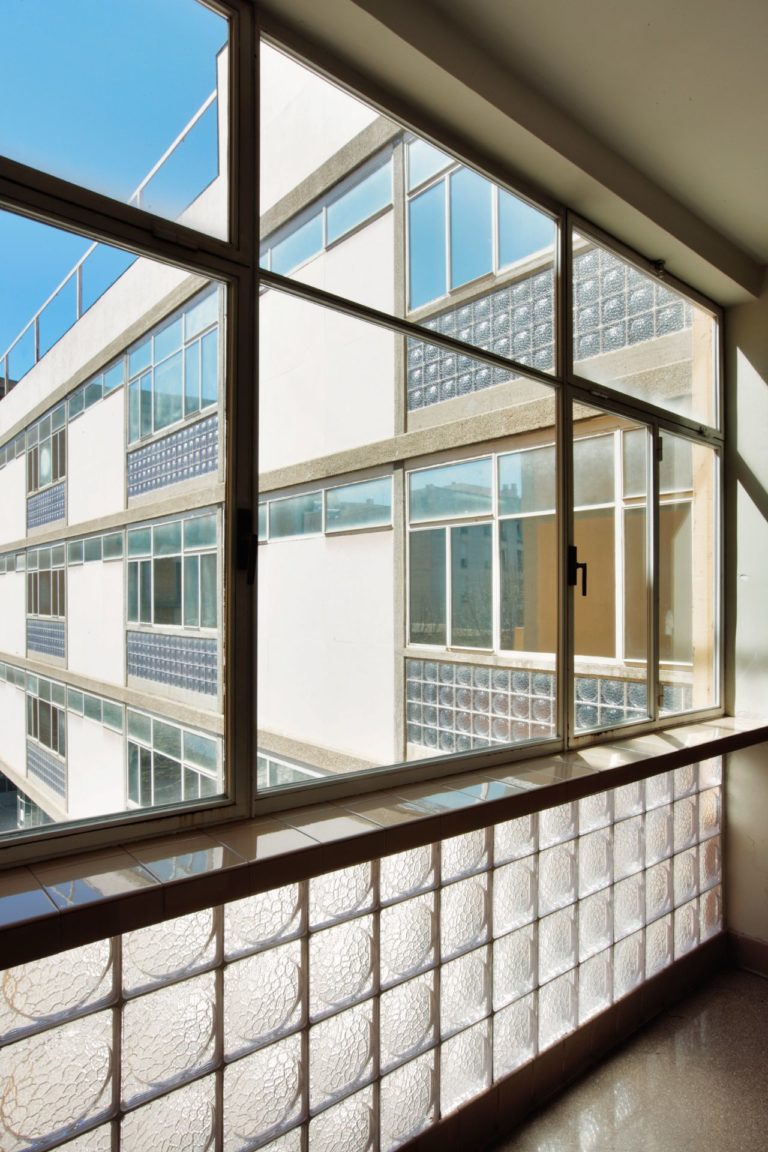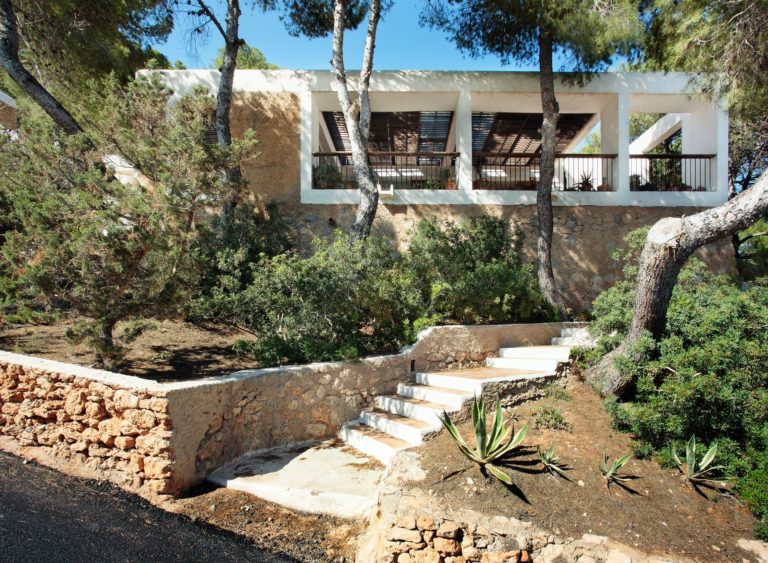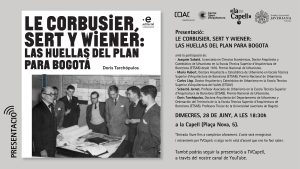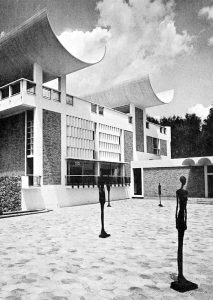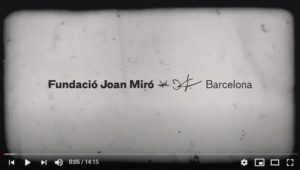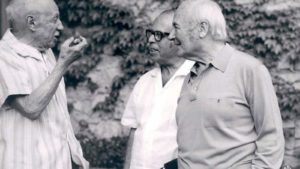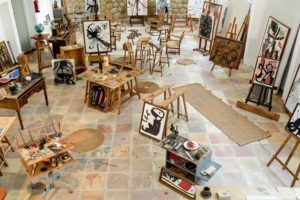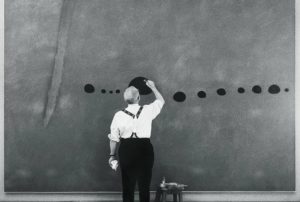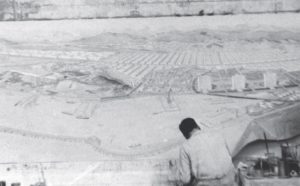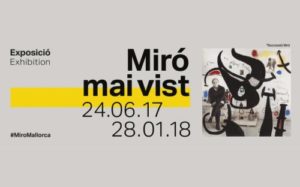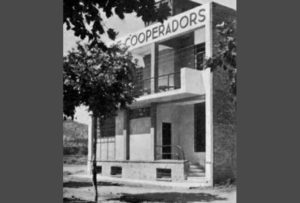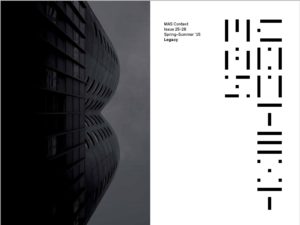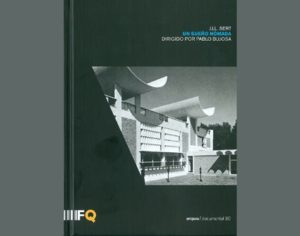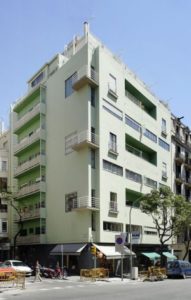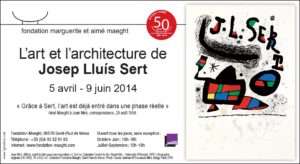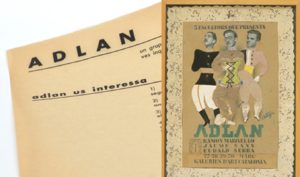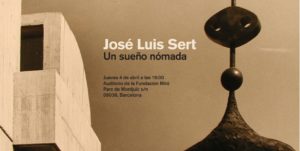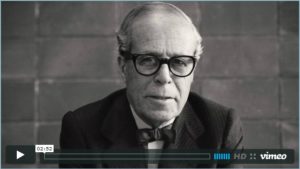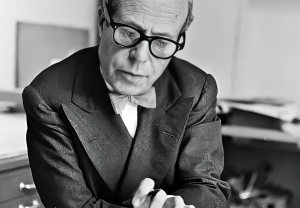
Josep Lluís Sert López
Barcelona, 1901-1983
Josep Lluís Sert was born into a well-to-do family from the Catalan bourgeoisie dedicated to the textile industry. He was the son of an engineer and banker – a member of the nobility – and nephew of the famous painter Josep Maria Sert, who supported him when he was orphaned at the age of 17. The young Sert decided not to continue in the family business and studied architecture instead – one of his motivations being his admiration for the work of Gaudí. He studied in Barcelona beginning in 1922, during a period when the architecture school was under the direction of Francesc de Paula Nebot, a proponent of Noucentisme. We know that, as a student, specifically in 1926, Sert was already in possession of three books by Le Corbusier, which had a major impact on the students in his year. Increasingly distanced from the architectural currents that were dominant at the school and drawn in by the architectural avant-garde that was beginning to make its way into Spain, he decided to invite Le Corbusier to visit Barcelona, taking advantage of the architect’s return trip to Paris from Madrid, where he had given a lecture. It was the beginning of a relationship that had a profound effect on his professional career.
Before finishing his degree, he organized exhibitions to show the new architecture and visited the places associated with its development (Vienna, Dessau, Stuttgart, Berlin). Finally, he made his way to Paris to visit the studio of Le Corbusier, with whom he began to collaborate immediately. Having earned his degree and fully settled in Paris, he became an apprentice of Le Corbusier and, later, a close collaborator and friend. There, he came into contact with an active generation of young architects, including Pierre Jeanneret and Charlotte Perriand. With former colleagues from architecture school – including Josep Torres Clavé and Joan Baptista Subirana – he took on his first commissions in 1929, splitting his time between Paris and Barcelona. Here, he combined his enthusiasm for the new architectural avant-garde – in keeping with Le Corbusier’s postulates – and the Mediterranean character, with no apparent contradictions: the universal solutions provided by the new architecture could, and had to, be adapted to the reality of each context, without neglecting the experience of vernacular architecture. This Mediterranean character permeated his designs throughout his career, even when building in far-removed contexts during his years in America.
In this early period, he combined comings and goings to Paris to collaborate with Le Corbusier, active participation in the CIAM in Frankfurt – where he met Giedion and Gropius – and activities to disseminate modern architecture, with a growing number of commissions in Spain: multi-family buildings in Barcelona, a chalet in Seville (the Duclós House), and projects for hotels and holiday developments. In 1930, Sert attended the founding of GATEPAC (Group of Spanish Architects and Technicians for the Progress of Contemporary Architecture) in Zaragoza. Shortly thereafter, he started a local section in Catalonia (GATCPAC) that also published a magazine to disseminate its ideas: AC. While accounting for the delay in the arrival of new architectural trends in Spain, the magazine defended a Mediterranean rationalism based on a vernacular architecture that offered an image and a series of solutions that were put forward as compatible with the architectural postulates that had taken hold in Central Europe during the 1920s.
With the Second Spanish Republic fully in place, Sert convinced the executive body of the CIAM to choose Barcelona as the venue for its 1932 meeting. Within this context, several plans were presented for the city of Barcelona, including the Ciutat de Repòs i Vacances [City of Rest and Holidays] and the Pla Macià. Sert’s activity during those years was intense: he participated in the different CIAM meetings – in Brussels and Athens – made friends with Miró, Calder, Gomis and Prats, and was very active in the intellectual circles of the time. In Barcelona, he built the sanatorium for patients with tuberculosis and began the Casa Bloc, a workers’ housing development that served as the model for future actions implemented by the Catalan government during the Republic; he also designed small summer houses and schools aligned with the pedagogical innovations of the moment. All this ebullience was cut short with the military uprising of 1936. With the country plunged into civil war, he built the Pavilion of the Spanish Republic in Paris, a city that he would be forced to leave behind to go into exile with his wife, Ramona Longás, or “Moncha”.
Sert and Moncha arrived in New York in 1939, where they were welcomed by the Calders. Sert began his activity in a number of different areas: teaching, professional practice, and the determination to create a North American CIAM. During those years, he wrote and published one of his most relevant theoretical texts on the city, called “Can Our Cities Survive?” He soon began collaborating with the US Federal government ─ for which he built infrastructures and embassies overseas ─ and founded the Town Planning Associates with a group of urban planners. The countries in Latin America, to which he travelled frequently, gave Sert the opportunity to test out his theories on the contemporary city; however, a series of adverse circumstances cut short his major urban projects for Brazil, Peru, Cuba and Colombia. At the same time, he did not turn his back completely on his relationship with Spain. Beginning in 1946 – no longer at risk of being detained – he was able to return to Catalonia, although the Balearic Islands, and Ibiza especially, became his favourite destination. In 1953, he built a studio for Joan Miró in Mallorca. Although the return to the Mediterranean, both physically and conceptually, was a constant until his death, his career was cemented and took off definitively in the United States.
In 1953, on a recommendation from Gropius, he was appointed dean of the School of Architecture at Harvard University in Cambridge, Massachusetts. With this appointment, he left behind New York and an uncertain phase of adaptation to the new American reality. It was the beginning of a brilliant career: his urban projects received serious consideration and were implemented, especially in the city of Cambridge where the university was located. He received a growing number of important commissions, including – among many others – the Holyoke Center (now the Smith Campus Center), the courtyard houses for visiting professors, and the famous Peabody Terrace complex, a residential complex for married students, all in the area around Harvard University. The commissions kept multiplying as his prestige grew in academic and government spheres, which translated into increasingly large projects, even outside the Boston area. This led him to join forces with several American architects. In New York he built, among other projects, the macro residential complex on Roosevelt Island.
In those later years, he also took on projects in Spain: in Barcelona he had the opportunity to build several residential buildings, but the construction of the headquarters of the Fundació Miró turned the city of his birth into the repository, not only of the first buildings of his career, but also the culmination of a trajectory with an enormous international projection.
Biography by Roger Subirà
Bibliografía
- LÓPEZ MATAS, Emiliano, Josep Lluís Sert y lo superfluo. La residencia de estudiantes casados en Harvard, Puente Editores, Barcelona, 2020.
- ARNÚS, María del Mar, Ser(t) arquitecto, Anagrama, Biblioteca de la memoria, Barcelona, 2019.
- JUNCOSA, Patricia, ed., Josep Lluís Sert: conversaciones y escritos. Lugares de encuentro para las artes, Editorial Gustavo Gili GG, Barcelona, 2011.
- ROVIRA, Josep M., ed., Sert 1928-1979. Mig Segle d’Arquitectura. Obra completa, Fundació Joan Miró, Barcelona, 2005.
- FREIXA, Jaume, Josep Lluís Sert, Santa&Cole, ETSAB, Barcelona, 2005.
- CHEVIAKOFF, Sofía, Josep Lluís Sert, HK Books, Rivas Vaciamadrid, 2002.
- ROVIRA, Josep M., José Luis Sert 1901-1983, Electa, Milano, 2000.
- AA VV, Arquitecto en Nueva York, ACTAR D, Barcelona, 1997.
- PIZZA, Antonio, ed., LL. Sert y el Mediterráneo [exhibition catalogue], Ministerio de Fomento, Colegio de Arquitectos de Cataluña, Barcelona, 1996.





